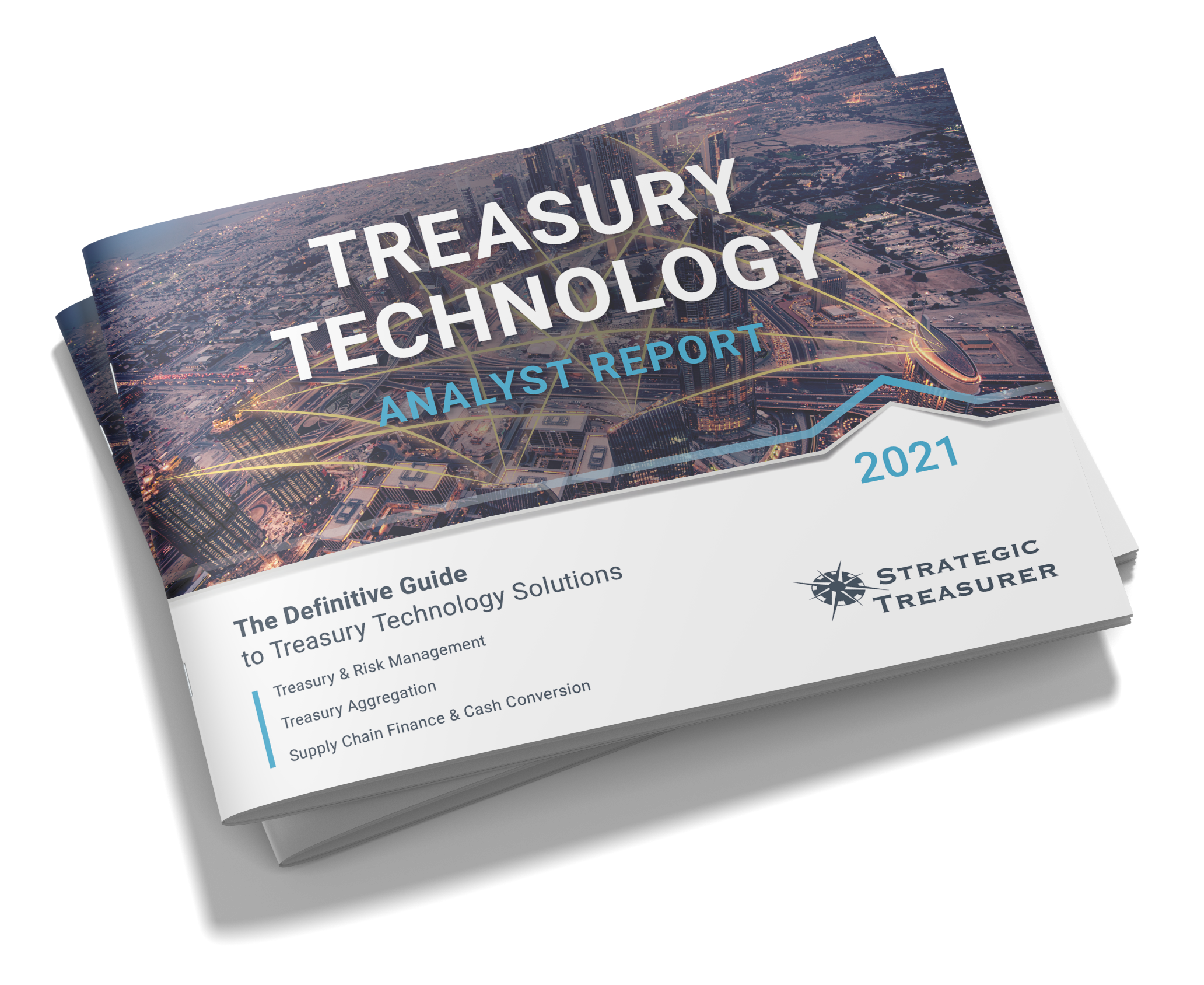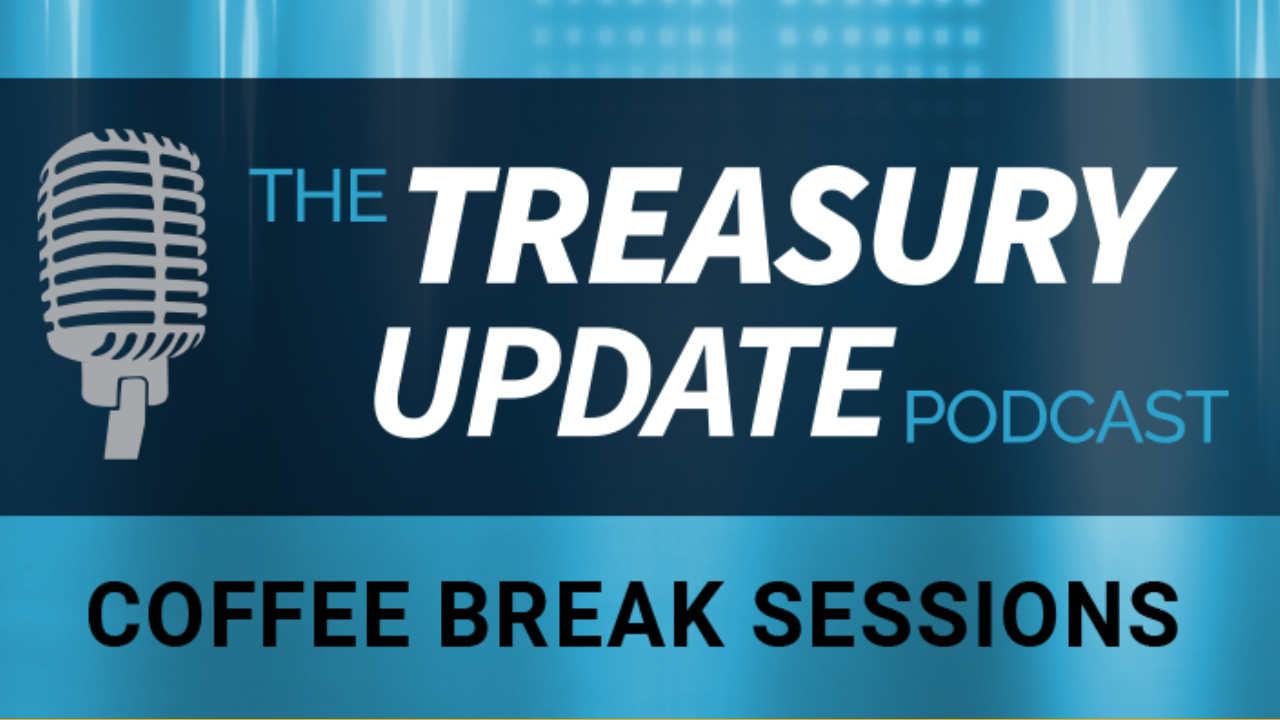
Session 71
Coffee Break Session:
What Is Commercial Paper (Investing)?
Host:
Jason Campbell, Strategic Treasurer


Speaker:
Paul Galloway, Strategic Treasurer


Episode Transcription - (Coffee Break Session Series) - Episode 71 - What Is Commercial Paper (Investing)?
Jason Campbell 00:03
Welcome to the Treasury Update Podcast, Coffee Break Sessions presented by Strategic Treasurer covering foundational topics and core treasury issues in about the same amount of time it takes you to drink your cup of coffee. I’ll be your host Jason Campbell, business development leader at Strategic Treasurer. Joining me today is Paul Galloway, Senior Advisor at Strategic Treasurer. Paul, I’m excited again to have another opportunity to speak with you today about another great investing topic. How’s it going out there?
Paul Galloway 00:30
It’s going great. Thanks for having me again.
Jason Campbell 00:33
Yeah, absolutely. Every time again, we do these episodes, I just continuously learn more and more, especially as I think in this time of age, and especially with so much uncertainty around, you know, investing, whether it’s you know, we talked about not just about, you know, if you’re in a company, but also talking about just being in retail as an individual, I think it’s always great to, again, continue to find ways to ensure that, you know, how do we maximize a little bit. Now, this go round here, we’re not gonna so much talk about in the retail piece of it as we’re going to talk more into commercial paper, and how that relates to investing. So let’s get right into it. So let’s talk to the audience about what is commercial paper.
Paul Galloway 01:10
Commercial paper is simply a short term funding vehicle that’s used by companies to fund operations. Typically, when I say short term, they’re typically, you know, think they can go out as far as 270 days. They can be overnight, in what happens is a company works with paper dealers, typically a bank, like Goldman Sachs, JP Morgan, worked with them to put together a program you sell that to investors to raise cash on a short term basis.
Jason Campbell 01:47
So why would someone invest in commercial paper? And no, and I was thinking about this at the beginning. I was thinking like when we were talking about when we first talked about this, this particular topic, and I think commercial paper, I’m like, What’s that printer paper? Right? So we’re not talking about that kind of paper or copier paper? Right? Why would someone invest into that?
Paul Galloway 02:03
Yeah, that’s a great question. I, you know, I really don’t know the history of why it’s called Paper other than used to be back in the day that bonds were physical notes, and you had coupons that you had to clip off the bonds. And I think paper came off that as a form of work called these shorter term issuances paper, printed on paper, just like bonds were at a certain interest rate tied to it certain structure and duration. And I think that might be why he was called paper. But, you know, your typical investors such as institutional investors, or mutual funds, or pension funds, even insurance companies make investments in commercial paper to boost their short term returns or yields, as well as to diversify the types of short term investments they make in their short portfolios. And so it’s a way for these investors to get better returns than using other short term investment vehicles potentially. And also another way to diversify amongst the investments.
Jason Campbell 03:15
So are there different types of commercial paper to invest in?
Paul Galloway 03:19
Yeah, there is. So you can either get a unsecured note or unsecured paper, which is backed by the credit worthiness of the issuer. And a lot of paper will be rated by like s&p Moody’s. And so you’ll hear people talk about either issuers or dealers or the investors talk about investment grade, they’ll talk about a one p one or a two P two, or some combination of the two, what they’re talking about is the rating of the paper. And that’s done by the rating agencies. And so the program is rated by these agencies. And they’ll look at okay, on unsecure base basis, they’ll look at, they’ll do a credit analysis. And then you can also get secured paper, which is backed by either assets or cash flows of the company. And again, your rating agencies will rate these the other way paper can be issued is it can be issued based on discount, or it can be interest bearing. And so when I say discount, let’s say you buy a million dollars of commercial paper, but that’s the face value. So what that means is, when that term of the paper matures, you’ll get a million dollars, but you don’t pay a million dollars for it. You pay let’s say $990,000 worth it over, you know, a week period. So, today you pay $990,000 to get that paper and five days later, they pay you back a million dollars. Well, the difference between the 990 and the million, that’s the return, or the discount that you get on that paper that likewise, let’s say I buy five day paper, a million dollars worth, I invest the million dollars in the paper, and I get yield or return on it based on what the agreed upon terms are. So I’ll get a million dollars plus interest.
Jason Campbell 05:29
When you get that return, you just kind of way is that percentage of the return on investment worth it? And I think from a short term perspective side of things, you know, you made a couple of interesting points around investing 990k to gain a 10k return on that million dollars. You know, I mean, all those types of things, but they’re just it makes it rather interesting. I’m weighing, where is the risk? Right? Because I think that all of that it’s an upside to things, what are some of these risks that could be associated with investing in commercial paper.
Paul Galloway 05:56
Some of the most common risks I think about or credit, interest rate, duration, liquidity, these are all risks that come into play. When you’re making investments and commercial paper, you know, I can go back to my days, when I was working for an insurance company buying paper, we couldn’t buy any paper that didn’t have at least an A one or p one rating. When you know, we were trying to change that so so I could buy paper that was rated a one p two, or a two p one. And that will qualify. Right. So that means there’s a difference in the rating buckets that the rating agencies put out there. I couldn’t buy paper that was a two P two, I wanted to be able to have an allocation a two P two because that paper will offer a higher yield or better discount, meaning I’ll get better returns on the investment I make over a short term period. And I couldn’t do that because our investment guidelines wouldn’t allow it. You know, I worked with an analyst on our credit team to do an analysis and say, hey, you know, what’s it look like in terms of traditional default rates? On a two P two paper? Yeah, what we found is that the variance and default rates between a one p one and a two P two really wasn’t very big. Given the duration that we were looking at, we’re buying paper that was only going out 14 days max. So it wasn’t a real long duration, we felt like we can make an allocation and get better yields on our short term portfolio by doing that. So that’s a proposal we put forward. So there’s that credit risk, then there’s this idea, the interest rate risks that five by shorter term paper and interest rates are rising, that could be better for me to be shorter. If I lock in longer duration, let’s say I go out three months, six months on paper, and I lock in returns based on what’s currently going on to interest rates are rising over those next three to six months, while I’m losing out on some reinvestment opportunity if I went shorter. Likewise, it could be the opposite case, in a declining rate environment. So interest rates can have an impact on your return. I made some comments about duration in those two examples. So duration can have an impact, I want to make sure that, you know I have duration matched up with what my obligations are. We’re talking about investments. But I’m making these investments on a short term basis. And I do have short term commitments meaning I have liabilities or payments or cash flow going out the door, I run the risk both on duration and liquidity, meaning my ability to liquidate those positions or get the cash back. So I can use or run some risk around the quality and duration. So I say liquidity risk means that hey, I can’t sell this to raise cash, or it’s not maturing quick enough because the duration is too long. And sometimes you can be put in a position that you might have to sell some paper because you don’t have the ability other places to effectively raise cash or liquidity. So there are some risks associated with that.
Jason Campbell 09:30
Learning a lot about commercial paper during this episode and realizing it’s not copy paper or printer paper, right, that you need. Someone can invest in it the different types and as well as some risk associated with investing in commercial paper. It’s been great to to chat with you. And for our listeners. Please be sure to tune in every first and third Thursday of the month for a new episode of the Coffee Break Sessions. As usual. If you have any questions, comments or feedback, please send us a note at podcast@strategictreasure.com. Until next time, take care.
Announcer 10:03
This podcast is provided for informational purposes only, and statements made by Strategic Treasurer LLC on this podcast are not intended as legal, business, consulting, or tax advice. For more information, visit and bookmark strategictreasurer.com.
Researching new treasury and finance technology can be overwhelming. Strategic Treasurer has stepped in to help. Explore our definitive guide to the treasury technology landscape and discover detailed, data-based coverage of:
- Treasury & Risk Management Systems
- Treasury Aggregators
- Supply Chain Finance & Cash Conversion Cycle
A part of the Treasury Update Podcast, Coffee Break Sessions are 6-12 minute bite-size episodes covering foundational topics and core treasury issues in about the same amount of time it takes you to drink your coffee. The show episodes are released every first and third Thursday of the month with Host Jason Campbell of Strategic Treasurer.




